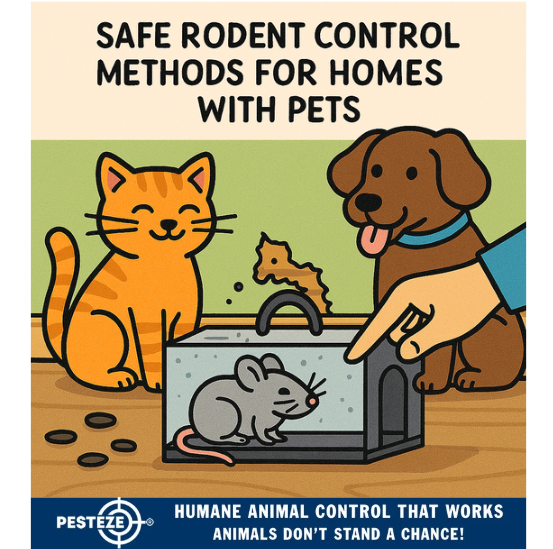SAFE RODENT CONTROL METHODS FOR HOMES WITH PETS

SAFE RODENT CONTROL METHODS FOR HOMES WITH PETS
SUMMARY
Rodent control in pet-friendly homes requires a delicate balance between effectiveness and safety. Traditional poisons and traps can pose serious risks to cats, dogs, and other household animals. This guide explores safe, pet-conscious strategies to eliminate rodents without endangering your furry companions. From natural repellents to smart prevention tactics, you’ll learn how to protect your home from mice and rats while keeping your pets out of harm’s way.
FEATURES
-
Pet-Safe Traps: Discover enclosed and humane traps that won’t harm curious pets.
-
Natural Repellents: Use essential oils and eco-friendly deterrents that are safe for animals.
-
Rodent-Proofing Techniques: Seal entry points and eliminate attractants without chemicals.
-
Smart Baiting Practices: Learn how to bait traps safely away from pet-accessible areas.
-
Cleaning and Sanitation: Maintain a rodent-resistant environment through pet-safe cleaning methods.
-
Professional Help Options: Know when to call experts who specialize in pet-safe pest control.
GUIDE DESCRIPTION
Controlling rodents in a home with pets presents unique challenges. While mice and rats can spread disease and cause damage, many conventional control methods—like poison baits and snap traps—can be dangerous to household animals. This guide offers safe, effective alternatives that prioritize both pest elimination and pet protection.
Start by identifying signs of rodent activity: droppings, gnaw marks, and scratching noises. Once confirmed, opt for pet-safe traps such as enclosed snap traps or live-catch cages. These designs prevent accidental injury to pets while still capturing rodents efficiently.
Avoid chemical rodenticides, which can be fatal if ingested by pets. Instead, use natural repellents like peppermint oil, clove oil, or vinegar sprays. These substances deter rodents but are generally safe for cats and dogs when used properly. Always apply repellents in areas inaccessible to pets.
Rodent-proof your home by sealing cracks, gaps, and vents with pet-safe materials like steel wool and caulk. Store food in airtight containers and clean up crumbs promptly. Keep pet food sealed and avoid leaving it out overnight, as it can attract rodents.
When baiting traps, place them in areas pets can’t reach—behind appliances, inside cabinets, or in attic spaces. Use gloves to handle bait and traps to avoid transferring scent.
If the infestation persists, consult a pest control professional who specializes in pet-friendly solutions. They can assess your home and apply treatments that are safe for animals.
By following these methods, you’ll maintain a rodent-free home without compromising your pets’ safety. It’s a win-win approach that combines compassion, cleanliness, and smart strategy.
- Amy Chang


Comments 0